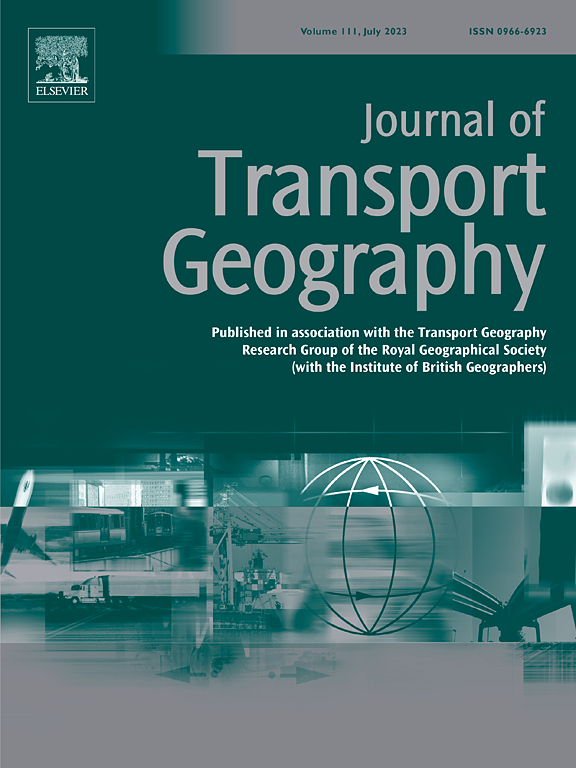Unraveling the network effects in station ridership growth patterns under metro network expansion
IF 5.7
2区 工程技术
Q1 ECONOMICS
引用次数: 0
Abstract
To address the mobility challenges associated with rapid urbanization, many cities have expanded their metro networks. This requires massive investment, but it does not uniformly translate to ridership growth across stations. The factors influencing station-level ridership dynamics and the underlying network effects are complex and poorly understood. This study thoroughly investigates the station-level ridership growth dynamics under network expansion, utilizing spatiotemporal lag fixed effects models to capture both the supply-side and demand-side network effects as well as temporal dynamics. Utilizing the evolution of Shanghai Metro from 2014 to 2019, we demonstrate that the network effects has a significant and intricate influence on station ridership and its relative growth patterns. On the supply side, neighboring stations show competitive relationships leading to reduced ridership growth, while stations on the same metro line can complement each other. For the whole network, the station betweenness and closeness centralities exhibit divergent impacts on ridership growth rate. On the demand side, we confirm the existence of spatial spillover effects of station ridership, especially at the line level. Additionally, the time-lagged and heterogeneous effects of network expansion are revealed. Our findings provide valuable insights for informed and targeted decisions regarding metro network planning and infrastructure investment.
求助全文
约1分钟内获得全文
求助全文
来源期刊

Journal of Transport Geography
Multiple-
CiteScore
11.50
自引率
11.50%
发文量
197
期刊介绍:
A major resurgence has occurred in transport geography in the wake of political and policy changes, huge transport infrastructure projects and responses to urban traffic congestion. The Journal of Transport Geography provides a central focus for developments in this rapidly expanding sub-discipline.
 求助内容:
求助内容: 应助结果提醒方式:
应助结果提醒方式:


